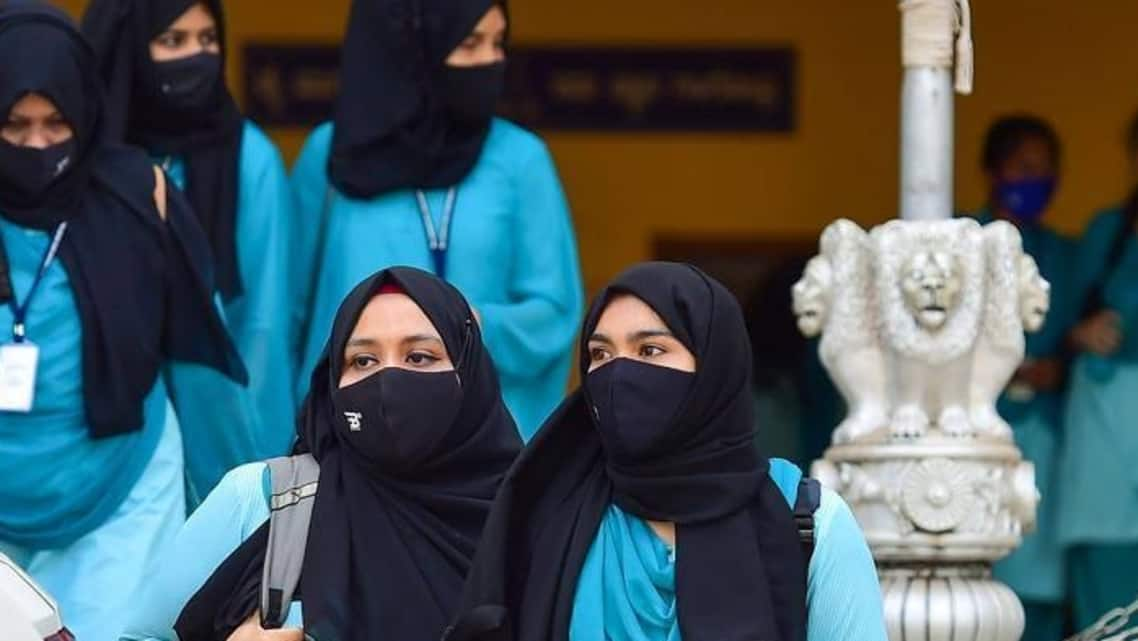A book that forgets how personal the hijab is
[ad_1]
The essays in ‘The Hijab: Islam Women and The Politics of Clothing’ are wide-ranging but tend to miss the lived experience of women who actually wear the veil
Coming on the heels of the discourse about the hijab in Karnataka, in Iran and in other parts of the country and the world, a book that “complicates the relationship between Muslim women and the hijab” while moving “away from predictable interpretations” would seem like the need of the hour. But how do you theorise about a piece of cloth that is as deeply personal, as complex, and as suffused with meaning as the hijab? For Muslim women such as myself, the hijab is everyday yet transcendental; an assertive, self-assured claim on individuality yet comfortingly communal; a vestment worn not to make a statement, while knowing that wearing it is a statement in itself. Through what prisms then do you view the hijab?
The answer, purportedly, is through contextualising the garment in the specific cultural, political, historical and temporal aspects of its adoption. Edited by P.K. Yasser Arafath and G. Arunima and featuring a host of contributors mainly from academia, The Hijab: Islam, Women and The Politics of Clothing is a collection of 17 essays and a controversial short story examining the veil in the Indian context and the socio-political churnings within the country, primarily the (often violent) demand that Muslims prove integration into the nation-state by identity and lifestyle erasure.
Largely written by women, the essays limit the discourse to the ethos of south India, perhaps because the catalyst event for the book occurred there. The essays branch out to various themes underpinning the Karnataka incident, from the idea of the uniform to hijabophobia, to the politics of clothing itself. Ranging from academic exploration to personal writings, the essays are thoughtfully balanced in content and examination. Included in the mix is an article by an Iranian and one about the hijab in Bangladesh, which lends an interesting wholesomeness to the book while it remains firmly entrenched in the Indian context.
The editors’ sympathies clearly lean towards the argument that choice is sacrosanct for Muslim women, and defers to the possibility of multifaceted reasons for choosing the same. The essay ‘Subjugation or Subjective Liberation’ anchors the concept and practice of purdah in historical research, then evocatively charts the various reasons why Muslim women in the Malabar region wear the hijab through interviews with several women.
Meanwhile, ‘Can’t a Scarf Be Part of a Uniform?’ insists that “restriction on clothing is political,” highlighting the liberal feminist tendency of aligning it with “neo-liberal and neo-imperialist agendas”. The liberal feminist discourse fixates too much on the garment and refuses to view it in its “contextual politics of covering/nakedness”, which “has been deployed often enough in history to empower or humiliate communities.”
‘Hijabophobia in Kerala’ is a fascinating study on how the Malayali sub-nationalist discourse that affirmed upper caste Hindu prominence and painted Muslims and Christians in supporting roles contributed to hijabophobia. J. Devika writes that the phobia “rests on Kerala’s claims to high social development and the alleged reluctance of the Muslim community to participate in ‘modern’…values. It views with suspicion any sartorial code that is explicitly religious and inseparable from religious identity, but singles out Muslim styles, especially female styles, as fear-inducing.” The “foreign”, “cumbersome” and patriarchal sari “was accepted as the symbol of social upward mobility,” but the abaya, with its roots in Saudi Arabia, induced discomfort and paranoia. This seems linked to the alienation of Muslims that seems to have happened at the global level in recent times: “as the processing of othering the Muslim turned increasingly intense and hostile post 9/11, so also did the distrust and disgust of Muslim women’s abaya.”
Each of the editors’ own chapters as well as other essays look at the hijab politically, with the Karnataka incident as the central focus. This makes for a tremendous amount of repetition. The repetition, coupled with a lack of commonality between the chapters, gives the book a stilted effect. The result is a book that appears stuck within the Karnataka incident and everything that led to or drew from it, making it out to be the defining moment of cataclysmic events that haven’t happened yet.
If the sheer number and range of hijab-related Ted Talks and the many videos and vlogs by women detailing their “hijab story”—that is, how they came to wear the hijab—are anything to go by, the veil is highly personal and contemplative. So the kind of severe, detached politicising of the hijab that the book engages in induces discomfort. At times it feels like a conversation between research scholars about you that you are overhearing: You understand what is being said, but there seems no room for addition. The arguments in many of the essays could ignite more discourse on the topic of the veil in India. But that’s not the book’s unique accomplishment. Instead, The Hijab’s crucial achievement lies in its vehement insistence on the need for contextualising the hijab, especially for the times we live in.
Tasneem Pocketwala writes on culture, identity, gender, cities and books.
[ad_2]
Source link
